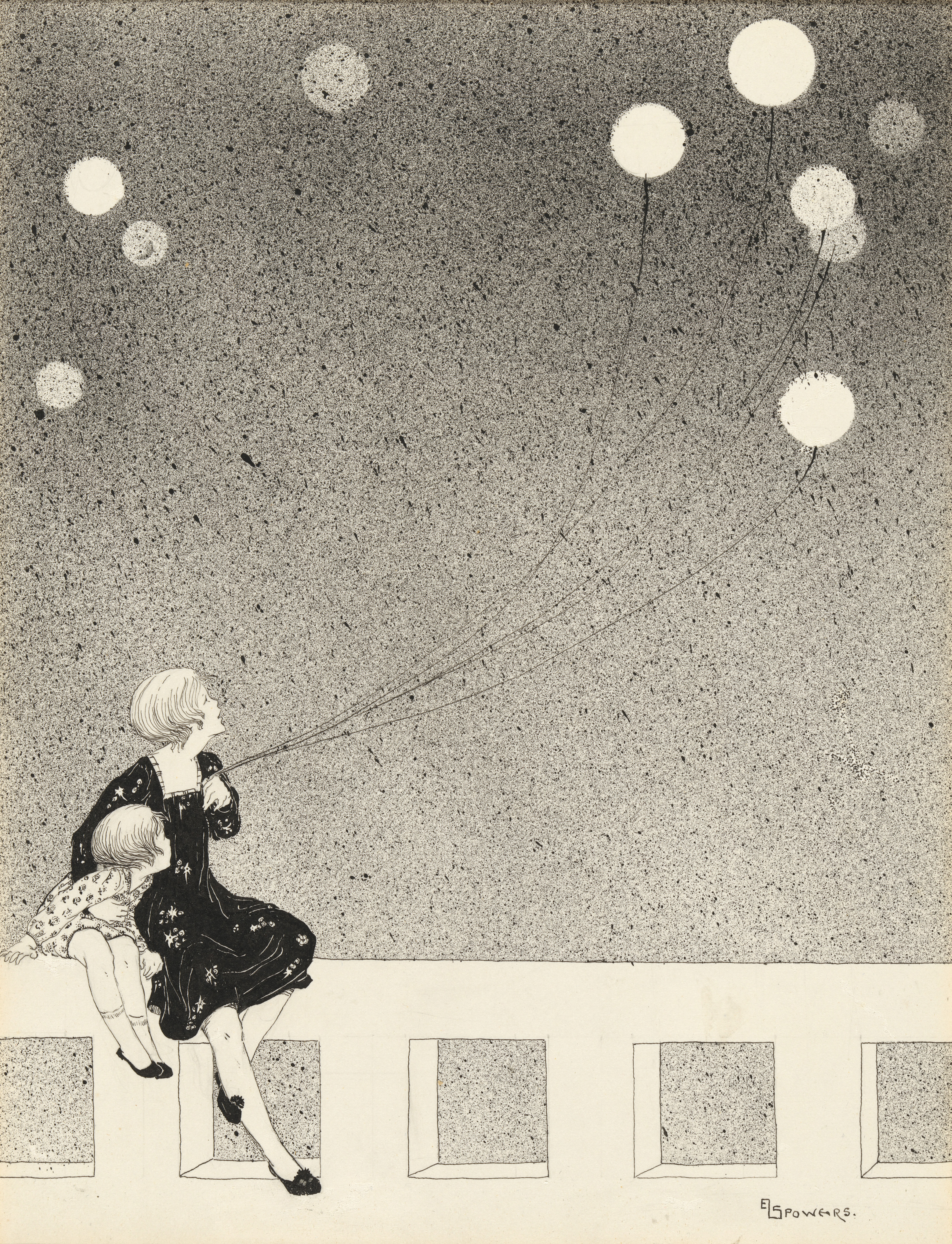Balloons by Ethel Spowers, circa 1920

Ethel Spowers, Balloons, c. 1920, drawing in black ink, National Gallery of Australia, Kamberri/Canberra, Gift of Chris Montgomery 1993
Balloons by Ethel Spowers, circa 1920
This work is a drawing in black ink and measures 26.1 centimetres tall by 21.1 centimetres wide. The work is displayed in a dark brown wooden frame with an off-white mat board.
This image has a fine line drawing of mother and child in the bottom left-hand corner and a speckled or flecked background. The tonal background with its fine ink splatter compliments the fine line drawing, and the work’s focal point, a crisp clean image of woman and child.
The woman and child sit on a stone or concrete wall. Moving from left to right five window-like squares that can be seen through divide up the surface of the wall.
Towards the top of the work the sky is more muted and dark alluding to night-time or a grey, overcast day. Ten white orbs punctuate the sky, in the top right-hand corner five of these white spheres are attached to string which the woman pulls close to her chest. In proportion to the woman and child the string seems unusually long, and it stretches across the sky as if caught up in a light breeze. The woman clasps her other arm tight around the waist of the child at her side holding her close. Both woman and child crane their necks and cast their eyes aloft. The woman opens her mouth in wonderment and the child leans her body in towards the sight of the balloons cast up high above in anticipation.
The woman and child are both dressed and groomed in the fashion of this era, the 1920s, hair cropped short around the ears, each in dresses with fine details, a star design on the woman’s and a small floral design on the child’s dress. Each wear pretty slip on shoes and their legs dangle as they perch themselves high up on the wall and marvel at the sight in the sky above.
Childhood was a constant source of inspiration for Spowers: her early drawings were often images from fairy tales and nursery rhymes, while her prints explored scenes of children at rest or play. She had a love of storytelling and many of her compositions contain a narrative element and appear to illustrate key scenes. Like Syme, Spowers was one of six children and in later years became a beloved aunt known for her cheeky, inventive stories.
The artist has signed her name, EL Spowers in black ink in a distinctive Art Nouveau style close to the bottom right-hand corner.

